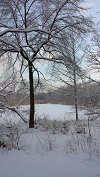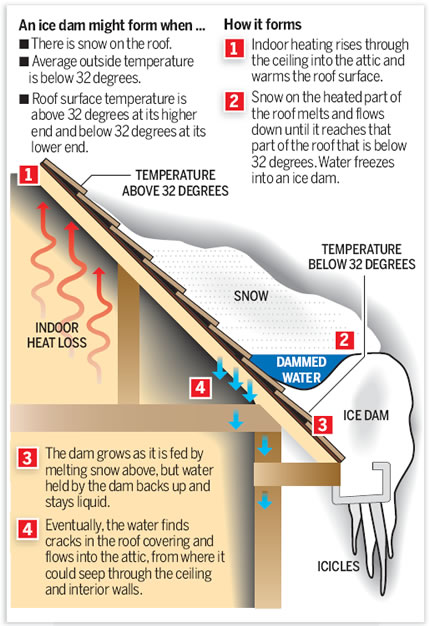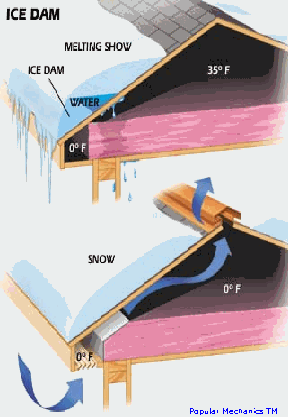

Ice dams and resulting icicles hanging from roof areas usually occur after a heavy snowfall and several days of freezing temperatures. Warm air inside your home leaks into the attic and warm the underside of the roof causing snow and ice on the roof to melt. The melted water will drain along the roof, under the snow, until it reaches the cold overhang. The overhang being at the same temperature as the outdoors causes the melted water to re-freeze and form an ice dam and icicles. The ice dam then can cause water to flow under the shingles in an uphill direction contrary to the design of the roof system, and the results may be a water spot on the ceiling in severe cases.
Twice the recommended application of ice guard underlayment on the roof deck is installed when roofs are replaced. It is best to let icicles melt naturally.
The following is recommend to deal with the issue:
- Use caution when walking under icicles
- Do not get onto the roof, overhangs or attempt to remove ice dams from the ground as falling ice, debris or tools can cause injuries or damage the roof or gutters
- Seal air leaks to your attic to stop warm air leakage, the source of the problem
- Most ice dams and any resulting water leaks are not a result of a defective roof, but a function of heat loss from the building melting snow on the roof. Â
- Keep second floor closet doors closed to reduce warm air leaks through attic access panels
- If added insulation is considered, increase to a value of at least R-38, which will significantly reduce the heat loss to the roof in winter and reduce heat build up on the second floor during summer months
- The sun will cause some melting even in freezing temperatures.

